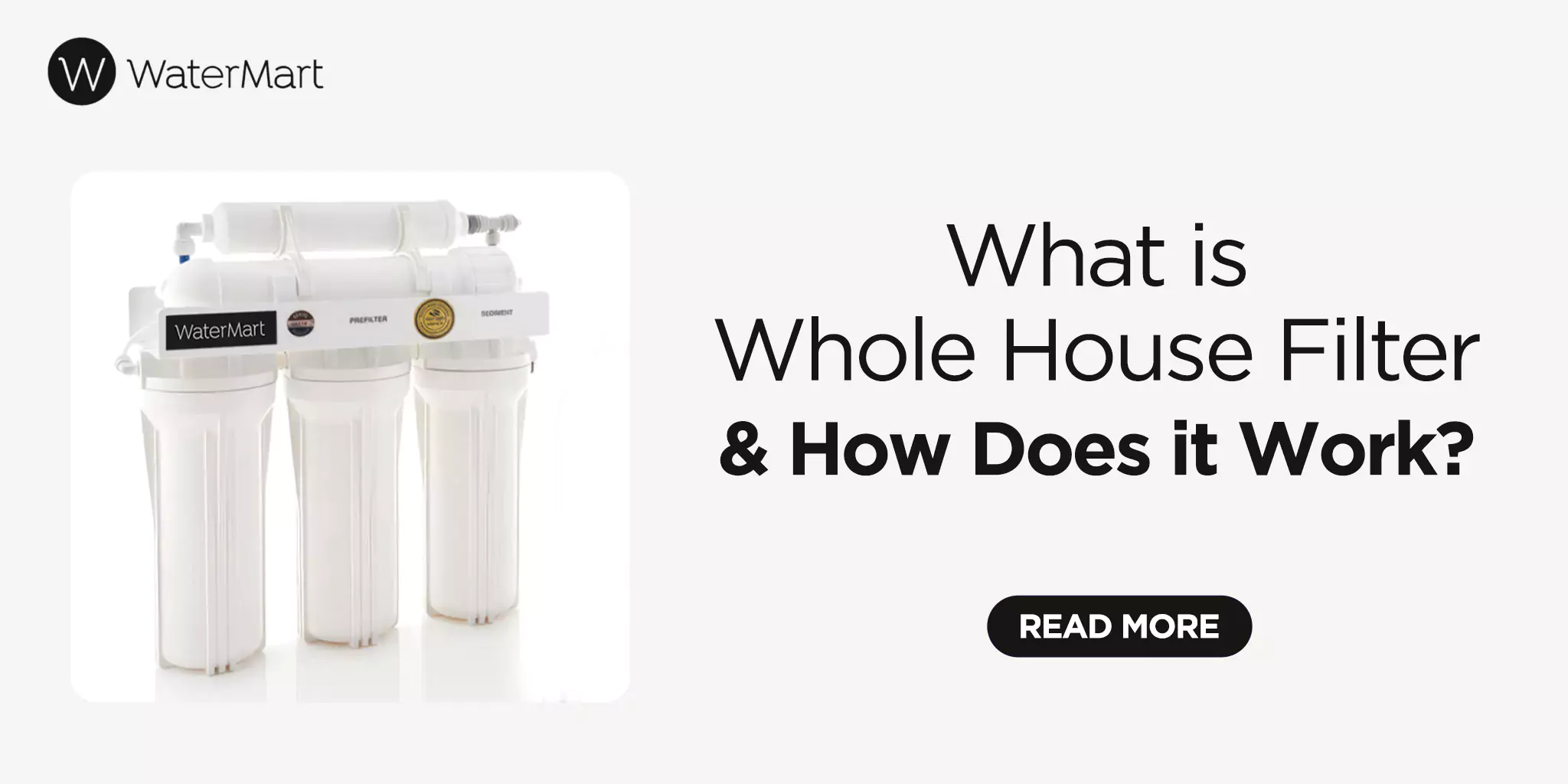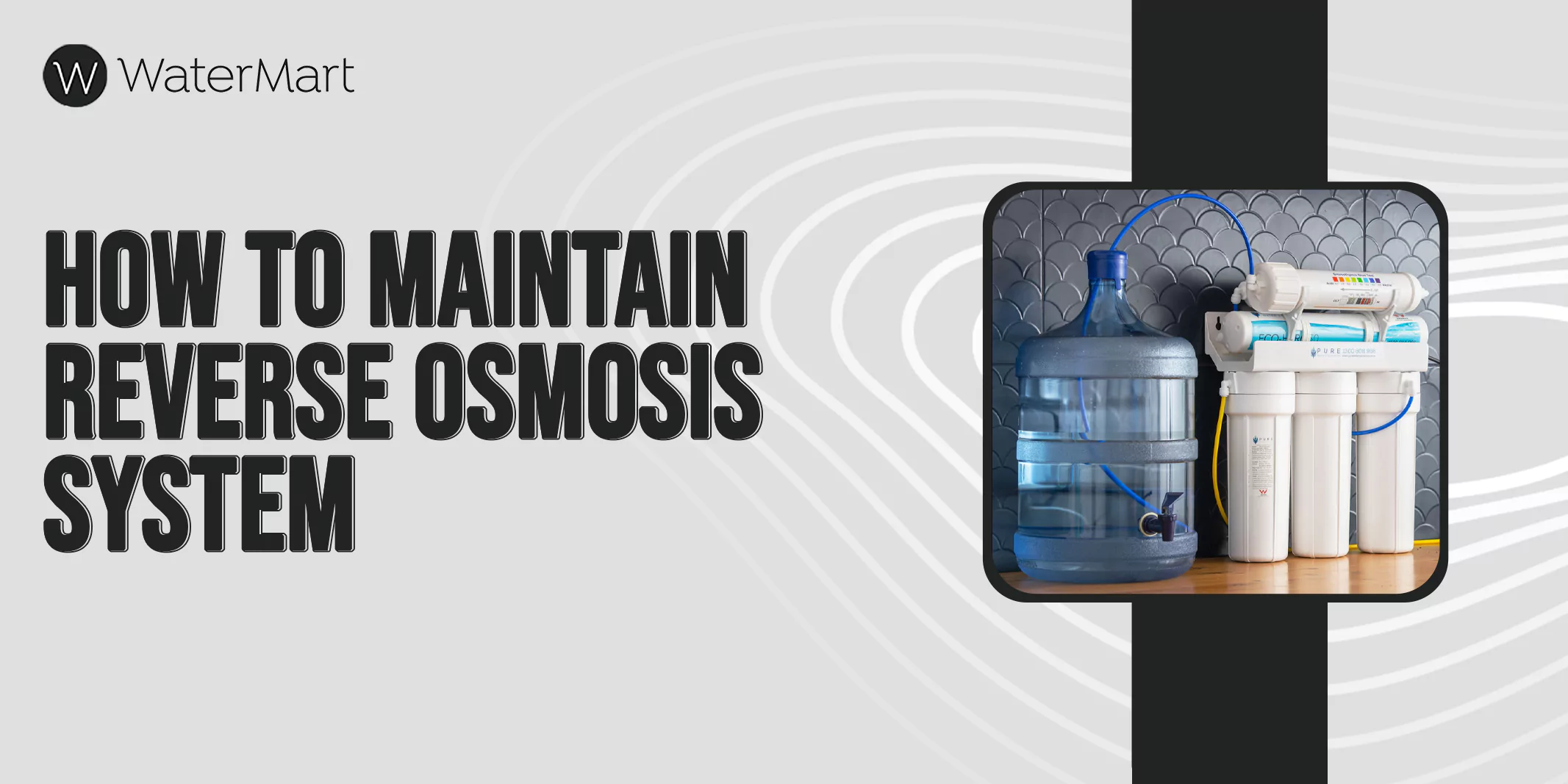Your cart is currently empty!
What Is a Whole House Water Filter and How Does It Work?
Even though the water supply in Toronto meets certain standards of quality, any issue like a natural disaster, heavy rainfall, or a boil advisory can contaminate the water. In 2000, more than 2300 people in Ontario suffered from severe sickness because bacteria entered their water systems.
Therefore, to prevent contaminated water from entering the pipelines of your house, whole house water systems are gaining popularity. But what is a whole house water filtration system, and what does it do? If you have the same questions, we are here to lead you to the right answers!
We will discuss what are whole-house water filters, how whole house filters work, and which type of filter is the most suitable for you.
What Is a Whole House Water Filtration System?
Whole house water filters, also commonly known as point-of-entry water filters, are installed at the main water pipeline and filter out the contaminated water before it enters your building. This means that the water flowing in every tap of your house or office is pure and free from any chemicals. This filtration system is not limited to purifying water at one specific point of use and that’s the best part about its functionality.
Many whole-house water filters are available in Toronto. They can be used to remove sediment, soften the water, filter out contaminants, or remove chlorine. We will now examine how these filters work to do their job efficiently.
How Does a Whole House Water Filter Work?
Water is treated at the main water plant for the presence of any chemicals. Sometimes, an excess of chlorine is added to the germs, which can be harmful as well. As the water flows through the pipes, several contaminants are mixed with it. Then it reaches your main water pipeline and enters your house.
A whole house water filter is used as an intervention at this entrance point and makes the water free of any impurities. With its installation, you will have safer and better-quality water for everything like cooking, drinking, washing, and showering. But how does it exactly filter water?
-
Sediment Filter:
This filter is also called the pre-filter. Simple whole-house filters contain this to remove dust particles and sediment mixed in the water. This filter has tiny pores that are too small to let any sediment pass through, and only the water can flow through them. Any particle larger in size than a blood cell (red) is trapped in this filter.
-
Chlorine Filter:
As we discussed above, water suppliers add chlorine purposely to make the water germ-free, but this is an unsafe element and should be eliminated from the water. Carbon filters are present to remove this excessive amount of chlorine.
The most common carbon filter used in whole house water filters is the Granular Activated Carbon filter. After the water flows through the sediment filter, it reaches the carbon filter. The filter is made up of carbon that has a very large surface area with many pores (crooks) on it that absorb water impurities, specifically chlorine.
Another type of chlorine filter is made up of a compound of copper-zinc but is not commonly used in whole house filters. The USA’s Environmental Protection Agency also recommends the use of carbon as chlorine filters.
-
UV Filter:
Some point-of-entry water filters have an additional UV filter that kills the living microbes in the water. In simple terms, it uses strong ultraviolet radiation to disorganize the DNA of the microorganisms so they are unable to reproduce.
-
Post Filter Stage:
After passing through all these stages, the water finally reaches the post filter stage. This is an enhancing stage as it ensures that all chemicals and sediment are removed from the water. It has mesh screens that trap any remaining harmful particles before letting the water travel to all the supply lines of your house.
-
Reverse Osmosis:
Reverse Osmosis is also a type of whole-house water filter that is widely used because of its efficiency in removing 99% contaminants. It has multiple filters like the sediment and chlorine filters mentioned above. First, the water goes through them and then reaches a semi-permeable membrane. This membrane has the tiniest pores (holes) that prevent small and large particles from flowing through.
The water that passes through these holes is pure and becomes known as a “permeate.” The leftover water containing these chemical particles is brine water, which goes through the drain line as waste water.
-
Water Softener
If you are installing a water softener system in your home, it works differently. It has a tank with resin beads in it that attract the charged hard particles of calcium and magnesium, and the remaining soft water flows into the pipes. Sometimes a salt tank is used to absorb particles from the resin to regenerate the process.
How Do I Choose the Best Whole-House Water Filter for My Home?
When choosing a whole-house water filtration system, you need to consider factors like the chemicals in your water, your budget, and the brand you are purchasing from If your water has only been tested to be hard, you should buy a whole house water softener otherwise reverse osmosis or simple whole house water filters are a better choice. You should only invest in NSF-certified water systems manufactured by famous, reliable brands. It’s about the safety of the whole water supply of your house and should be given full thought.
You can confidently trust WaterMart, one of the best water filter providers, for reliable whole-house systems and seamless installations with lead and activated carbon filters. We also provide whole-house water softeners for our customers. Every filter stage in the whole house water system is tested to produce potent results and to enhance the water quality. You can also get our installation services and we will complete the whole process very proficiently.
Whole House Water Filters – Our Final Words
Being the experts of water filtration systems, we are aware that with the growing population of Toronto, the need to buy water filters is also increasing. That’s why we suggest our customers take a look at a comparison of point of entry vs point of use water treatment systems to make an informed decision. This way, they will have a continuous supply of pure, safer, and good-quality water in every corner of the house.
Additionally, filling the buckets or bottles from only one faucet will be no hassle. However, if you have a limited budget, small filter set-ups are also good to begin with.
FAQs
Do Whole House Water Filters Work?
Yes, they effectively filter out the entire water supply to your house. You can also rent a whole-house water filter to test its effectiveness before making a final purchase.
How Long Do Whole House Water Filters Last?
Whole house filters last several years but require consistent replacement of filter cartridges. It is best to check each filter after every 3 to 6 months.
Where Should a Whole House Water Filter be Installed?
At the main water supply of your house. You can find it in the basement or crawlspace.
How Much Does a Whole-House Water filtration System Cost?
It can cost anywhere between $800 and $5000, but the installation charges for most good-quality whole-house filters can reach $5000.
Is a Whole House Filter Worth it?
It is worth your money because its multi-stage filtration process works efficiently to make the water pure and chemical-free before it enters your house.
Do I Need a Whole House Water Filter?
Yes, if your water was tested and contained chemicals and contaminants, the only reliable solution is installing a whole house water filtration system.






